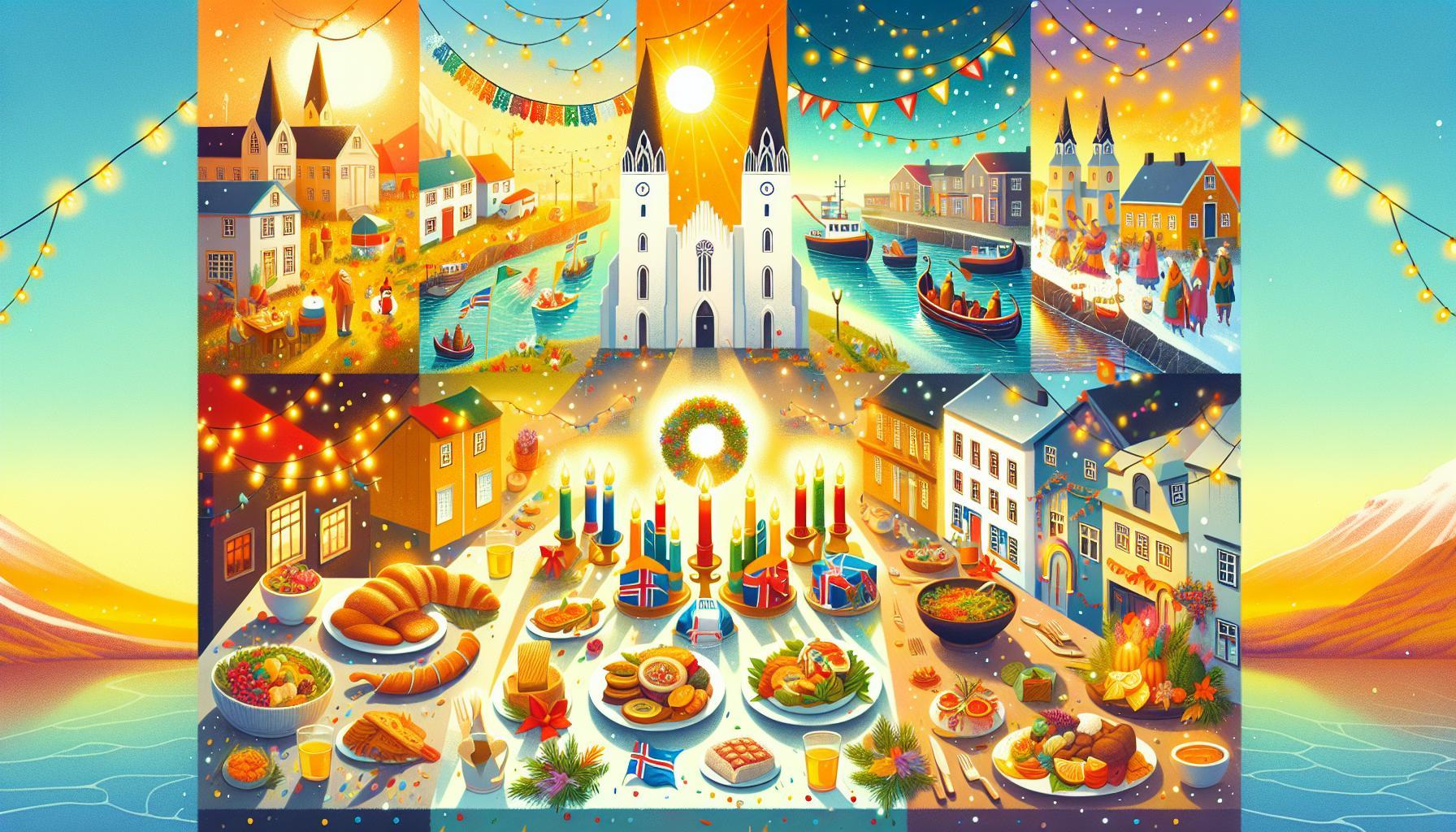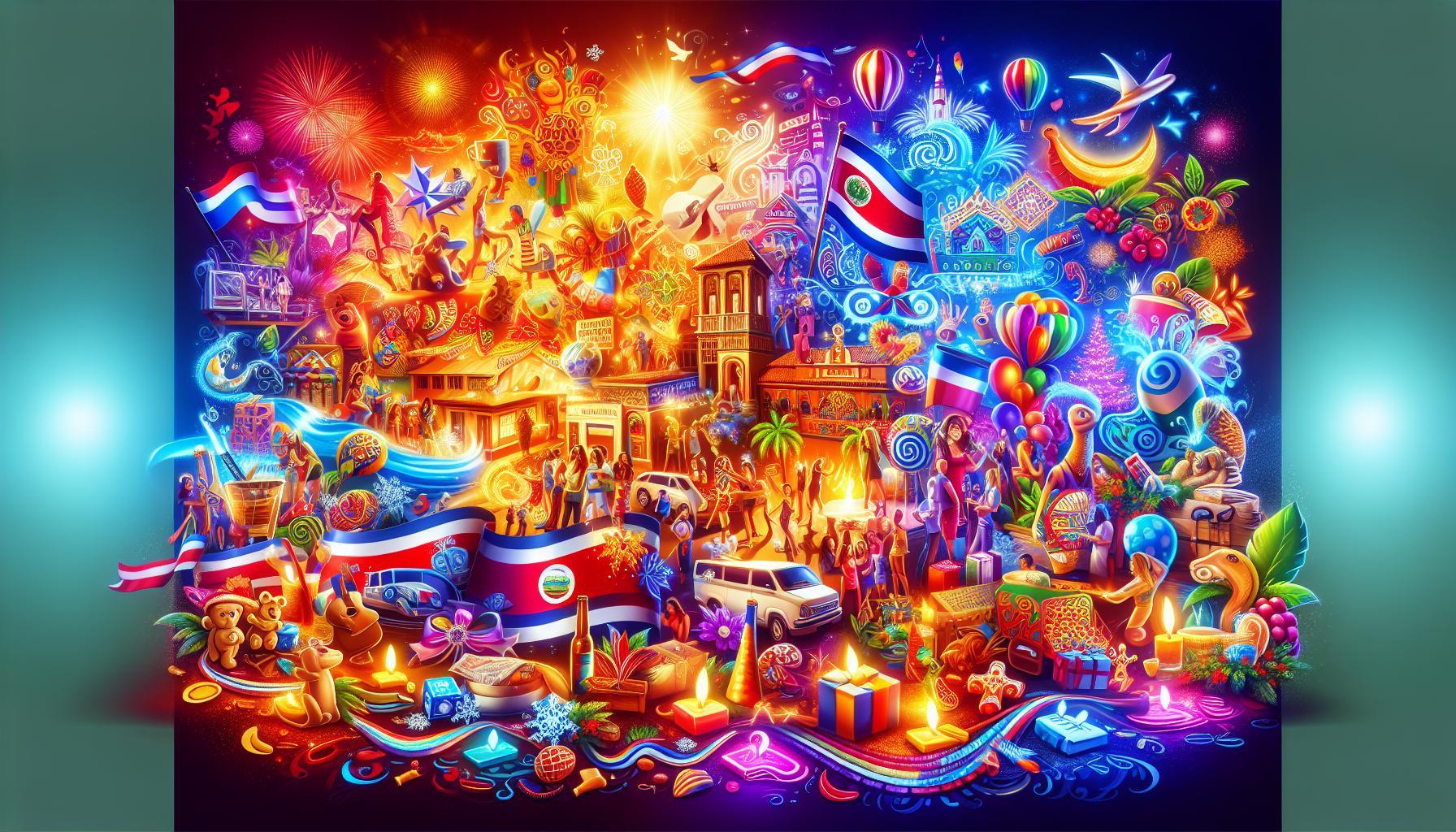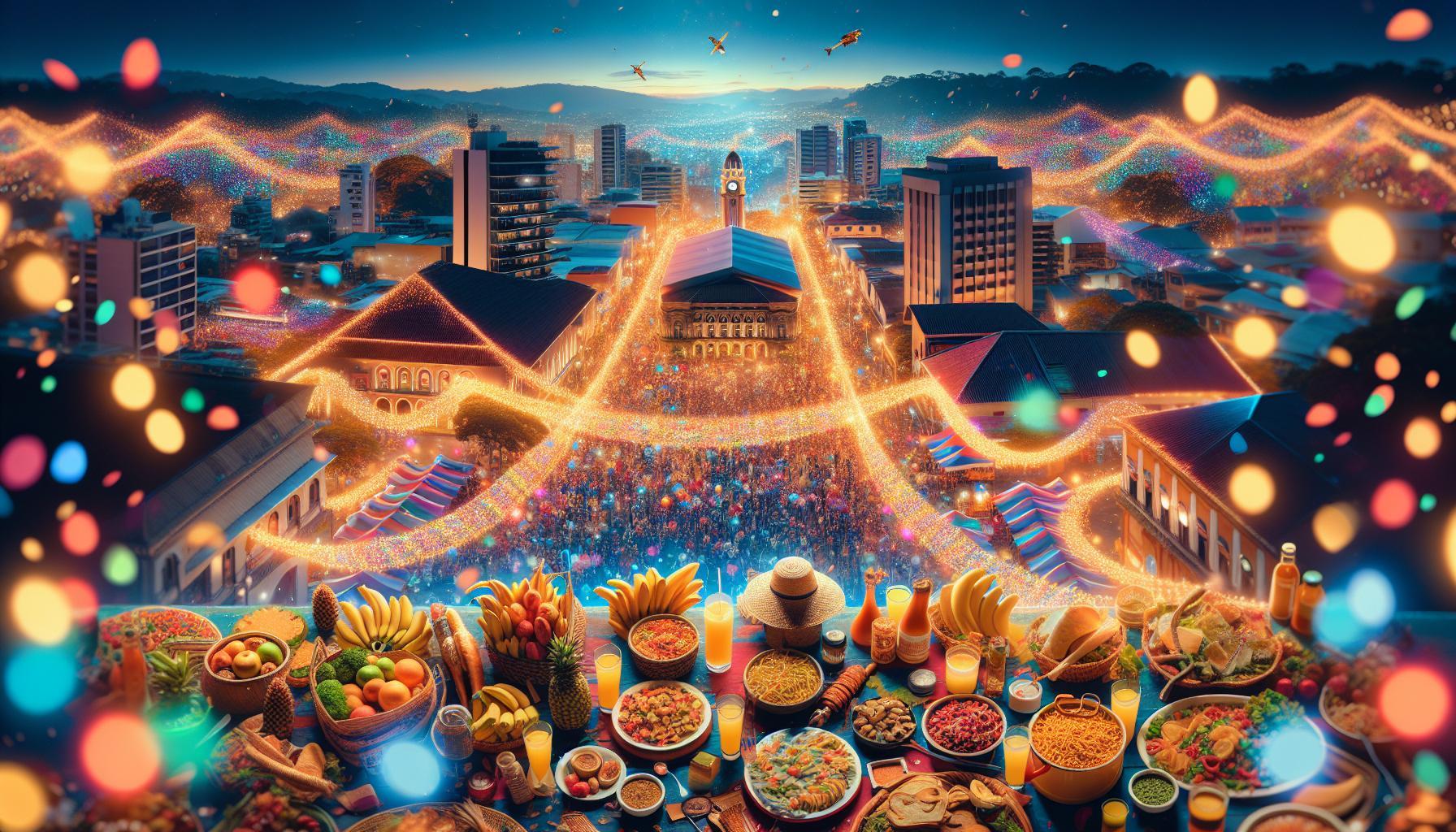As you plan your journey to Iceland, you might wonder: do daylight hours ever dwindle in this unique Nordic paradise? Understanding the dramatic shifts in sunlight throughout the year is crucial for travelers seeking to experience the magic of Iceland’s seasons, from the ethereal midnight sun to the cozy embrace of winter darkness.
The Midnight Sun: A Unique Phenomenon in Iceland’s Summer
In the heart of summer, Iceland transforms into a realm of everlasting daylight, captivating both residents and travelers alike. This stunning phenomenon, known as the midnight sun, occurs due to the country’s high latitude, causing the sun to remain visible for an extended period. Visitors can experience a unique blend of adventure and relaxation as they explore the stunning landscapes of Iceland under a sun that refuses to set, creating a surreal atmosphere perfect for exploration and capturing breathtaking photographs.
When to Experience the Midnight Sun
The midnight sun graces Iceland primarily from late May through late July, with the peak occurring around the summer solstice (June 21st). During this period, locations like Reykjavik and Akureyri enjoy nearly 24 hours of sunlight. Here are some key details about daylight hours:
| Date | Daylight Hours |
|---|---|
| May 15 | 20 hours, 55 minutes |
| June 21 | 24 hours |
| July 15 | 21 hours, 26 minutes |
Activities Under the Midnight Sun
With the sun shining brightly even at midnight, the opportunities for activities are endless. Here are some popular options:
- Hiking: Explore stunning trails in places like Thingvellir National Park or along the Snaefellsnes Peninsula.
- Photography: Capture the ethereal beauty of landscapes under soft, golden light.
- Festivals: Attend local events that celebrate the long days, such as the Reykjavik Culture Night.
- Whale Watching: Utilize the extended daylight to go on a whale-watching tour, which can be scheduled at various times throughout the day.
Experiencing the midnight sun in Iceland is more than just witnessing a natural phenomenon; it’s an opportunity to connect with nature in ways most people can only dream of. Visitors are often enchanted by the warm glow that bathes the island, allowing for countless moments of exploration and adventure. Whether it’s an impromptu picnic or a late-night dip in a geothermal pool, the days filled with sunlight provide a truly memorable backdrop for your summer adventures in this remarkable country.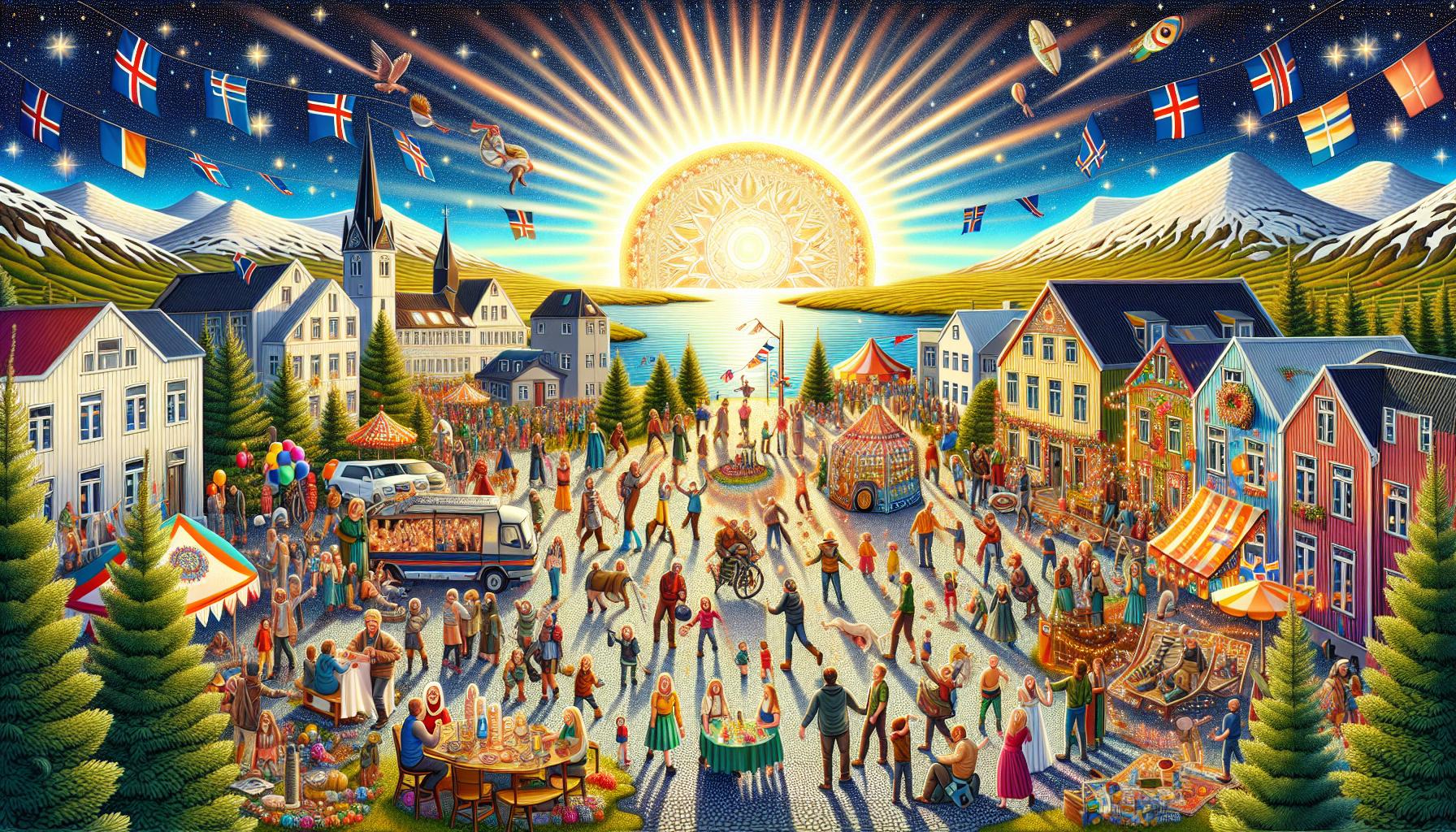
The Dark Days of Winter: Embracing the Long Nights
As winter descends upon Iceland, the landscape transforms into a realm of stark beauty, where elongated shadows dance across the snow and the sun makes its sporadic appearances. Despite what many might expect from a country so close to the Arctic Circle, the darkness of these long winter nights offers a unique charm and an array of experiences that can only be fully appreciated during this time of year.
The Beauty of Long Nights
During winter months, particularly from late November to early January, daylight in Iceland can be as limited as only four to five hours a day. Yet, instead of viewing this lack of sunlight negatively, many locals and travelers embrace the tranquil atmosphere that accompanies these dark days. The phenomenon of the Polar Night brings about a vivid opportunity to witness the beauty of winter nights illuminated by the Northern Lights, a dance of colors that paints the sky with hues of green, pink, and sometimes even red.
To truly savor the essence of these evenings, consider exploring some winter activities that harmonize perfectly with this season:
- Stargazing: With minimal light pollution, the clear skies provide exceptional visibility for stargazing. Grab a thermos of hot cocoa and lay back to enjoy the celestial wonders.
- Cozy Cafes: Iceland’s capital, Reykjavik, boasts a thriving café culture where you can warm up with a traditional Icelandic hot chocolate or coffee while admiring the scenic views through frosted windows.
- Winter Festivals: Engage in seasonal festivities such as the Festival of Light in mid-November that celebrates the return of daylight, offering vibrant parades and artistic installations that brighten the dark days.
Managing Seasonal Affective Disorder
With such limited sunlight hours, it’s common for some to experience Seasonal Affective Disorder (SAD). Incorporating bright light therapy at home can be an effective way to counteract the effects of winter darkness, helping to regulate mood and maintain energy levels.
| Action | Description |
|---|---|
| Light Therapy | Use a special light box for about 20-30 minutes each morning to mimic natural light. |
| Stay Active | Engage in regular physical activity to release endorphins, which can alleviate symptoms of SAD. |
| Outdoor Exploration | Take advantage of the sunlight hours by going outside for walks or hikes during the day. |
| Social Connections | Maintain social interactions; join local groups or activities to stay connected and combat isolation. |
These simple yet effective strategies can help anyone navigate through Iceland’s winter days with a positive mindset. In the end, while the question “Does Iceland ever get dark?” may conjure images of despair for some, for others, the long nights are an opportunity to engage with nature and culture in ways that are both unique and uplifting.
How Daylight Hours Shift Throughout the Year
The progression of daylight hours throughout the seasons creates a captivating rhythm, particularly noticeable in regions like Iceland, where the extremes can be quite stark. The phenomena of the Midnight Sun during summer and long, dark winters showcase the significant variance in daylight, challenging the notion of traditional day and night. During the summer months, especially around June, parts of Iceland experience nearly 24 hours of sunlight, allowing for extended outdoor activities and unique experiences like hiking under the bright night sky. Conversely, winter casts a long shadow, with the sun barely peeking above the horizon in December, leading to only a few hours of twilight.
Understanding the Shift
This seasonal shift in daylight has profound effects on both the landscape and lifestyle. Here are some key points to consider:
- Summer Sunlight: During June and July, daylight can last up to 24 hours, facilitating a vibrant nightlife and diurnal activities. This constant illumination allows for a flourishing tourism sector as visitors engage in hiking, whale watching, and other attractions late into the night.
- Winter Darkness: In contrast, from late November to early January, daylight diminishes sharply, often lasting only 4-5 hours. This limited light invites locals and tourists alike to enjoy winter sports and the enchanting Northern Lights.
- Transitional Seasons: The shoulders of summer and winter, spring and autumn, see more moderate daylight hours but are characterized by rapid changes. The days lengthen or shorten significantly in these months, making them particularly beautiful and appealing for travelers.
The experience of daylight, or its absence, plays a critical role in cultural practices and tourism in Iceland. Knowing when and how daylight hours shift can help travelers plan more effectively. For example, those wishing to experience the vibrant summer can plan visits around Midsummer’s Day, while winter enthusiasts can target the darker months when they can witness the Northern Lights in all their glory.
| Month | Average Daylight Hours |
|---|---|
| January | 4-5 hours |
| April | 13-14 hours |
| June | 24 hours |
| November | 5-6 hours |
Understanding how these daylight hours fluctuate not only enriches the experience of visitors but also highlights the unique beauty of Iceland’s natural environment.
Local Perspectives: How Icelanders Adapt to Seasonal Changes
In a country where the sun rarely rises during winter months and barely sets in summer, how do Icelanders navigate the stark contrasts of daylight throughout the year? The seasonal changes not only dictate the natural landscape but deeply influence the lifestyle, culture, and even mental well-being of the local population. Understanding how communities adapt to these extremes reveals much about their resilience and ingenuity.
Embracing the Long Dark: Seasonal Rituals and Community Cohesion
During the winter, where daylight can fluctuate to as little as four hours a day, Icelanders have developed innovative ways to combat the effects of Seasonal Affective Disorder (SAD) and maintain their spirits. Many engage in community gatherings and seasonal festivals that cultivate a sense of belonging and purpose. For instance, the festival of Þorrablót in February celebrates traditional Norse culture and kinship, helping to brighten the darker days through shared feasting and merriment.
- Lighting Up the Darkness: The use of bright artificial lights and “happy lamps” has become common in homes and workplaces to counteract the lack of natural sunlight.
- Outdoor Activities: Local traditions such as winter hiking and ice fishing gain popularity, keeping residents active and engaged despite the cold and dark.
Maximizing Daylight: Summer Strategies for Well-Being
Conversely, the summer months bring almost round-the-clock sunlight, with daylight stretching up to 24 hours a day. Many Icelanders take advantage of this, often modifying their schedules to incorporate more outdoor activities during the extended daylight. It is not unusual to see families barbecuing late into the night or engaging in sports after dinner.
| Activity | Typical Seasonal Timing | Community Benefits |
|---|---|---|
| Late Night Barbecues | June-August | Fosters social connections and family bonding |
| Outdoor Sports Events | All Summer | Encourages physical fitness and community participation |
| Cultural Festivals | Summer Solstice | Enhances cultural pride and local tourism |
Iceland’s unique approach to darkness and light serves as a testament to their adaptability. The blend of tradition, modern practices, and a strong sense of community ensures that Icelanders not only endure harsh conditions but also thrive, creating a vibrant culture that celebrates both daylight hours and the enchanting moments of darkness.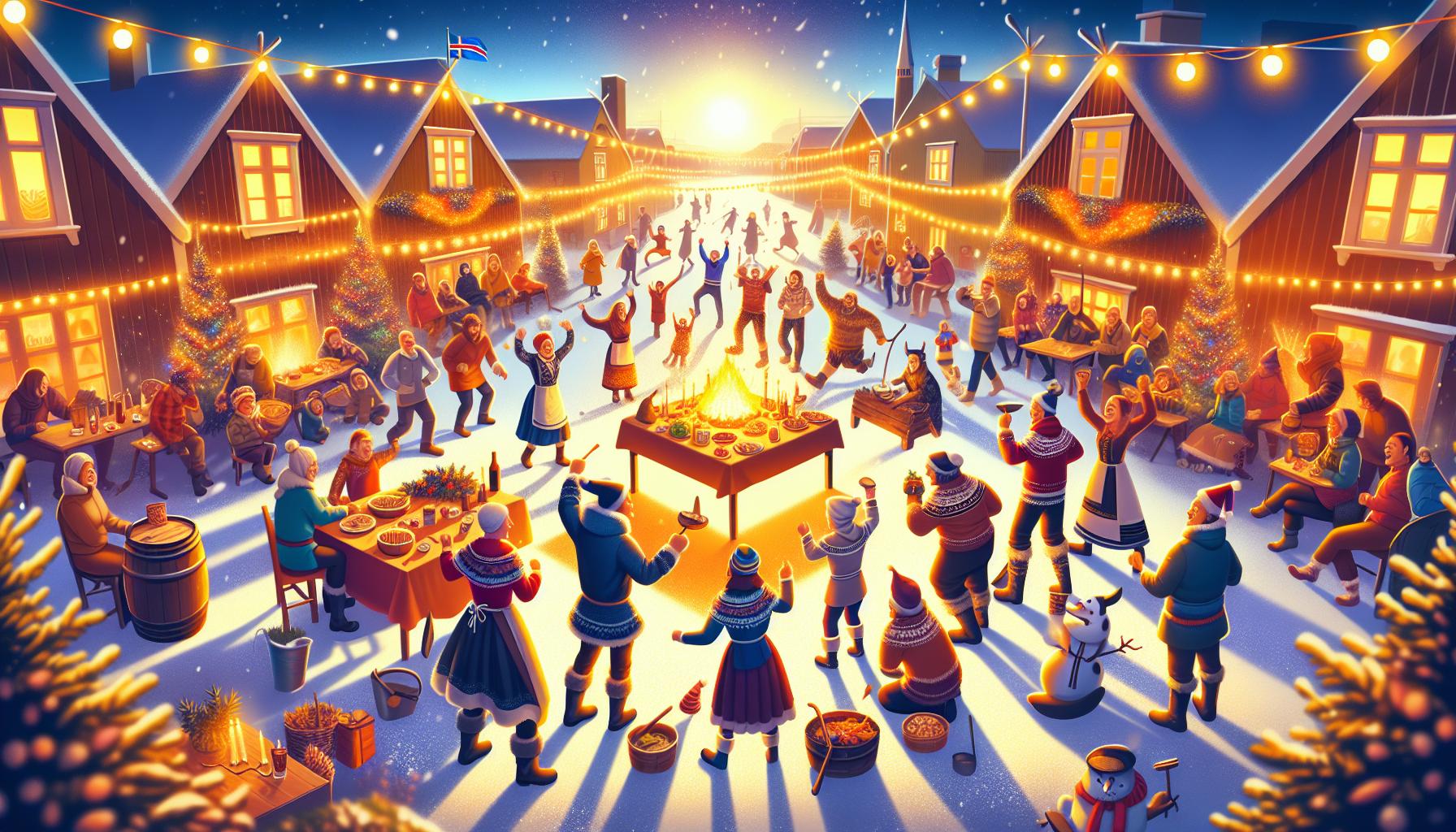
Planning Your Visit: Best Seasons for Daylight Enthusiasts
Planning a trip to Iceland? Understanding its unique daylight patterns can significantly enhance your experience, especially if you’re a fan of long days filled with potential exploration. The country’s geographical position offers a distinctly varied play of light throughout the year, making it a paradise for daylight enthusiasts. In summer, visitors can revel in nearly 24 hours of sunlight, which allows for adventure-filled days without the constraints of twilight.
Summer Bliss: Midnight Sun
During the summer months, particularly from late May through early August, daylight is abundant. For example, in Reykjavik, the sun rises as early as 3:57 AM and sets around 22:50 PM, granting you ample time to immerse yourself in the stunning natural landscapes and vibrant cultural experiences [2[2]. This phenomenon, known as the Midnight Sun, creates a surreal experience where the sun barely dips below the horizon, inviting travelers to hike, explore, and bask in nature even late into the night.
Why Late Spring and Early Fall are Golden
While the summer months boast endless daylight, late spring (like late May) and early fall (September) also offer ideal conditions for those who wish to enjoy significant daylight while avoiding the peak tourist season. During this time, the weather starts to warm up, trails become more accessible, and you can enjoy daylight hours that vary from 15 to 18 hours, depending on the exact timing of your visit [1[1]. These transitional seasons allow for comfortable travel because of milder temperatures and fewer crowds.
Exploring the Darker Months
For those intrigued by the changing seasons, visiting during winter months might be rewarding too, albeit with the understanding that daylight hours are limited to approximately 4-5 hours each day. This period offers a unique opportunity to witness spectacular winter landscapes and potentially catch the Northern Lights during the long nights. However, ensure to plan your activities during the limited daylight to make the most of your visit.
Whether you’re chasing the glory of the Midnight Sun or reveling in the dramatic winter nights, understanding the daylight dynamics in Iceland as presented in the article “Does Iceland Ever Get Dark: Daylight Hours and Seasons” will help you craft an unforgettable itinerary tailored for your adventures under the Icelandic sun.
Sunlight and Culture: Festivals Celebrating Light in Iceland
The phenomenon of prolonged daylight in Iceland during the summer months is a breathtaking experience that is celebrated through a variety of festivals designed to embrace the vibrant energy of light. As the northern sun scarcely dips below the horizon, communities across the country come alive, honoring the unique relationship between their culture and the radiant days that characterize this stunning landscape. With numerous celebrations paying homage to the brightness of summer, visitors can immerse themselves in the exuberant spirit of Icelandic life during this season.
One of the most notable festivals celebrating light is the Reykjavik Culture Night, held in August. This festival transforms the city into a lively hub filled with art, music, and performances as local artists showcase their work. The event’s atmosphere is electric, highlighting the city’s rich cultural tapestry as thousands of residents and tourists gather to celebrate the warmth of the season. Another popular event is the Reykjavik Winter Lights Festival, which takes place in February. While it celebrates the beauty of light during the darkest part of the year, it also reflects on the contrast of light against the long winter nights, featuring illuminating artworks and a multitude of activities, including guided walks under the mesmerizing glow of the auroras.
In addition, the Secret Solstice Festival encapsulates the spirit of the summer solstice with a lineup of international music acts and joyful revelry. The festival takes place during the peak of the midnight sun, allowing attendees to dance under the glow of the setting sun that never truly sets. This celebration not only showcases music but also embraces local culinary delights, cultural workshops, and innovative artistic expressions.
For those seeking a more traditional experience, the National Festival (Þjóðhátíð) in Þjórsárdalur is a must-visit. This longstanding festival celebrates Icelandic heritage with bonfires, traditional music, and folk dancing, all under the bright skies of summer. It unites people from all walks of life, showing how light can foster community spirit and cultural pride in this unique arctic environment.
Ultimately, these festivals reflect the essence of life in a land where the sun can shine almost uninterrupted. As daylight perseveres, Icelanders find creative ways to celebrate their culture, unite as a community, and honor the beauty of their remarkable landscape, where the question of “Does Iceland Ever Get Dark” inspires a deeper appreciation for these celebratory moments marked by light.
Tips for Coping with Darkness: Activities and Mindset
As the sun dips below the horizon and the world around you is cloaked in darkness, it can feel quite daunting, especially in places like Iceland, where winter nights are particularly extended. However, embracing this time can lead to a rejuvenating experience when you engage in the right activities and cultivate a positive mindset. Understanding that the seasonal shifts, as highlighted in “Does Iceland Ever Get Dark: Daylight Hours and Seasons,” can impact your mood is vital, but what really counts is how to adapt and thrive despite these challenges.
Cultivating a Positive Mindset
To navigate the darker months, fostering a constructive attitude is crucial. Here are several strategies that can help reshape your perspective:
- Practice gratitude: Each day, jot down three things for which you are thankful. This simple exercise can illuminate positive aspects of your life that might be overshadowed by the darkness.
- Focus on the temporary: Remind yourself that the darkness is seasonal and will eventually give way to brighter days, instilling hope and patience.
- Engage in mindfulness: Activities such as meditation or yoga can help you stay grounded, encouraging a deeper connection with the present moment, regardless of external conditions.
Engaging Activities for the Dark Months
When the sun has hidden away, you might feel inclined to retreat indoors, but this can lead to feelings of isolation. Instead, consider these enriching activities that can help turn the solitude of dark days into moments of warmth and connection:
- Explore winter sports: Take advantage of Icelandic winters by trying out skiing or snowboarding. This not only keeps you active but also lets you appreciate the stunning landscapes.
- Artistic pursuits: Engage in creative hobbies like painting, pottery, or crafting. The act of creating can be incredibly therapeutic and counteracts the gloom associated with long nights.
- Social gatherings: Host themed dinners or game nights with friends or family to reinforce connections and fill the evenings with laughter and companionship.
- Plan short getaways: Consider taking brief trips to explore other areas of Iceland. The contrast of your surroundings can help break the monotony of winter darkness.
Maintaining Healthy Routines
Avoiding the winter slump isn’t just about mindset; maintaining a healthy lifestyle is equally important. Here are some effective habits to incorporate:
| Activity | Benefits |
|---|---|
| Regular exercise | Boosts mood and energy levels, combats fatigue. |
| Balanced diet | Provides necessary nutrients to combat seasonal affective disorder. |
| Vitamin D supplementation | Helps maintain energy levels and improve mood. |
| Sleep hygiene | Ensures adequate rest, improving overall well-being. |
By integrating these practices into your life, you can more confidently navigate the extended periods of darkness that Iceland presents during its winter months. Your ability to adapt not only enriches your experience but also highlights the beauty inherent in each season, as discussed in the article “Does Iceland Ever Get Dark: Daylight Hours and Seasons.”
The Science Behind Iceland’s Extreme Daylight Variations
Iceland’s unique geographical position near the Arctic Circle results in some of the most dramatic variations in daylight hours found anywhere in the world. During the summer months, the phenomenon known as the “midnight sun” bathes the land in almost 24 hours of bright daylight. Conversely, in the depths of winter, daylight can be as scarce as a few hours per day. Understanding the science behind these extremes reveals fascinating insights into how Earth’s tilt and orbital dynamics affect our experience of light and darkness.
The Earth’s Tilt and Its Impact
At the heart of Iceland’s extreme daylight variations is the tilt of the Earth’s axis, which is approximately 23.5 degrees. This axial tilt is responsible for the seasonal changes we experience in daylight hours. During the summer solstice, around June 21st, areas above the Arctic Circle, including Iceland, are tilted towards the sun, resulting in prolonged daylight. In contrast, during the winter solstice, around December 21st, the same areas are tilted away from the sun, leading to minimal daylight.
- Summer Solstice: Almost 24 hours of daylight.
- Winter Solstice: Daylight can last just about 4-5 hours.
This effect can be illustrated through the table below, highlighting the average daylight hours across different periods of the year:
| Month | Average Daylight Hours |
|---|---|
| January | 4-5 hours |
| April | 13-15 hours |
| July | 24 hours |
| October | 9-11 hours |
Effects on Climate and Lifestyle
These remarkable daylight fluctuations significantly influence Iceland’s climate, ecology, and even cultural practices. The long summer days promote a burst of activity as locals and tourists alike enjoy outdoor adventures, from hiking and fishing to exploring natural wonders like waterfalls and geysers. During this season, festivals often celebrate the light, encouraging community gatherings and late-night festivities.
In contrast, the extended darkness of winter brings about unique challenges. Many Icelanders embrace the concept of “hygge,” a Danish word encompassing coziness and comfort, as a way to cope with long nights. Homes are filled with warm lighting, and social gatherings become vital for maintaining spirits through the winter months. Understanding how these daylight variations shape lifestyle choices provides a glimpse into the resilience and adaptability of Iceland’s population.
In summary, grasping these scientific concepts behind daylight variations in Iceland sheds light on how they dictate not just the environment but also the culture and lifestyle of those who live in this captivating land of fire and ice. Exploring “Does Iceland Ever Get Dark: Daylight Hours and Seasons” offers an enlightening perspective on how such extremes can foster community and influence daily life.
Frequently Asked Questions
Does Iceland ever get dark during the summer?
Yes, during the summer months, especially in June and July, Iceland experiences the phenomenon known as the Midnight Sun, where the sun barely sets. This means stays bright even at midnight.
Iceland enjoys nearly 24 hours of daylight from late May to early August, creating long and vibrant days perfect for exploring its stunning landscapes. Even in early June, you can expect approximately 21 hours of daylight. Travelers often find it enchanting to witness sunlight illuminating the beautiful scenery at unusual hours.
What are the daylight hours in Iceland during winter?
In winter, Iceland experiences significantly shorter daylight hours, with only about 4-5 hours of light per day in December. This creates a stark contrast to the summer months.
During the winter solstice, you can expect the sun to rise around 11:30 AM and set by 3:30 PM. This limited daylight can feel magical, as it sets the perfect backdrop for viewing the Northern Lights. Many people visit during this season specifically for the opportunity to witness this stunning natural phenomenon.
Why does Iceland have such varied daylight hours?
Iceland’s extreme latitude contributes to its significant variations in daylight hours between seasons. The country’s position allows for long summer days and very short winter days due to the tilt of the Earth’s axis.
During the summer, the sun’s path takes a longer route across the sky, resulting in prolonged daylight. In contrast, during winter, the sun dips lower, causing shorter periods of light. This seasonal fluctuation influences not only the natural scenery but also local cultural happenings, such as festivals that celebrate light and darkness.
Can I see the Northern Lights in Iceland?
Yes, the Northern Lights, or Aurora Borealis, are often visible in Iceland during the winter months, particularly from September to April.
The long, dark nights provide an excellent backdrop for this breathtaking natural light display. Many visitors plan their trips around optimal times to observe the Auroras, often heading to less light-polluted areas outside Reykjavik for the best views. For more information on planning your Northern Lights trip, you can explore local tours.
What is the best time to visit Iceland for daylight hours?
For ample daylight hours, the best time to visit Iceland is between late May and early August when the days are the longest.
June, particularly around the summer solstice, offers almost 24 hours of daylight, perfect for outdoor adventures such as hiking, sightseeing, and exploring the golden beaches or delicate icebergs. Keep in mind, during this time, accommodations can be in high demand, so early booking is recommended.
How can daylight hours affect my travel plans in Iceland?
Understanding the daylight hours helps in planning activities and maximizing your experience of Iceland’s breathtaking scenery.
During the summer, you can schedule more activities without worrying about it getting dark. In contrast, during the winter, you might want to plan your main adventures during the day, ensuring you experience both the beauty of daylight and the magic of the Northern Lights at night.
Does the weather affect daylight hours in Iceland?
While the length of daylight in Iceland is primarily determined by the season, weather can impact how much of that light you actually see.
Overcast skies or storms can obscure sunlight, particularly in winter. Travelers should be prepared for quick weather changes and consider flexible plans. Ensure you check weather forecasts alongside daylight times to make the most of your visit!
Wrapping Up
As you can see, Iceland’s daylight hours oscillate dramatically between the seasons, creating a unique play of light and shadow that shapes the culture and lifestyle of its inhabitants. From the midnight sun of summer, where the sun barely dips below the horizon, to the long, cozy nights in winter when daylight can be fleeting and rare, this country embraces its extremes.
Imagine wandering through Reykjavik on a bright summer night, with locals enjoying a late-night coffee at an outdoor café, laughter echoing under the glow of the endless twilight. “I never want the sun to set!” a friend might exclaim, reminding you of how energizing those long days feel.
Conversely, envision the serene calm of a winter evening, perhaps by a crackling fire, as you gather with friends to share stories, the city draped in cozy darkness, where twinkling lights from the windows create a picturesque scene. These moments deepen your connection to the land and its rhythms.
Whether you’re chasing the light or savoring the shadows, Iceland invites you to delve into its enchanting cycles of day and night. We encourage you to explore further, share your own stories, and immerse yourself in the breathtaking landscapes and vibrant culture that breathe life into this captivating island. Each season offers new adventures and insights, waiting for you to discover. So pack your bags, and let your journey through Iceland—where the days can stretch on forever, or retreat into peaceful dark—begin!

